These are the BEST Buttermilk Pancakes! Super easy to make, and SO fluffy. These will be your new weekend brunch favorite. AND you can make a double (or even triple) batch, portion them out and stick them in the freezer to use on a busy morning.
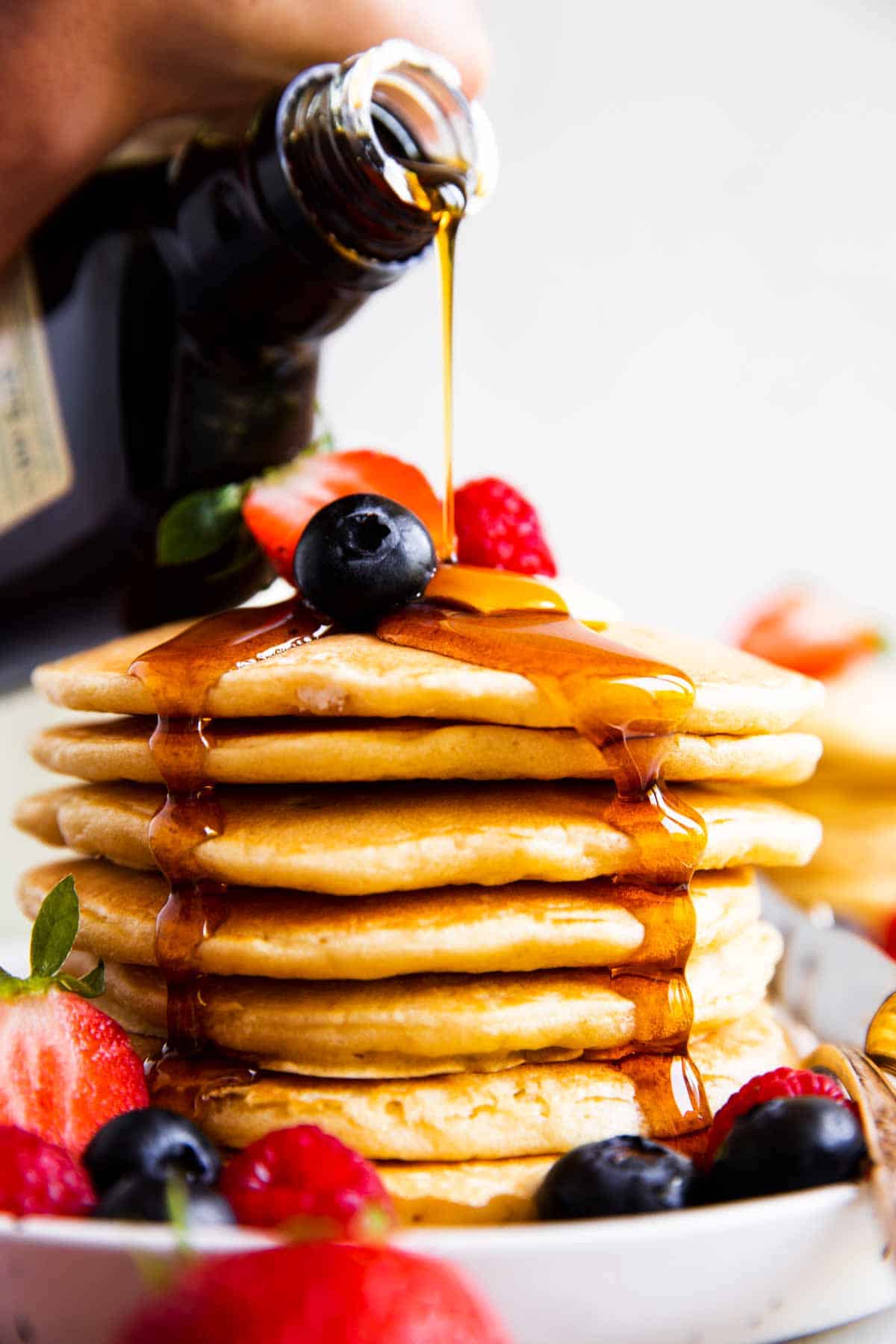
Buttermilk Pancake recipe
- Pancakes are quick and easy to make from scratch, you only need a few pantry staples to whip up a batch.
- Don’t worry if you don’t keep buttermilk on hand – you can make these easily without – there are some great substitutes for it (outlined in the tips below).
- This recipe freezes so well, you can make up a large batch and freeze the leftovers for later.
Ingredients you’ll need
Here is a visual overview of the ingredients in the recipe. Scroll down to the printable recipe card at the bottom of this post for quantities!
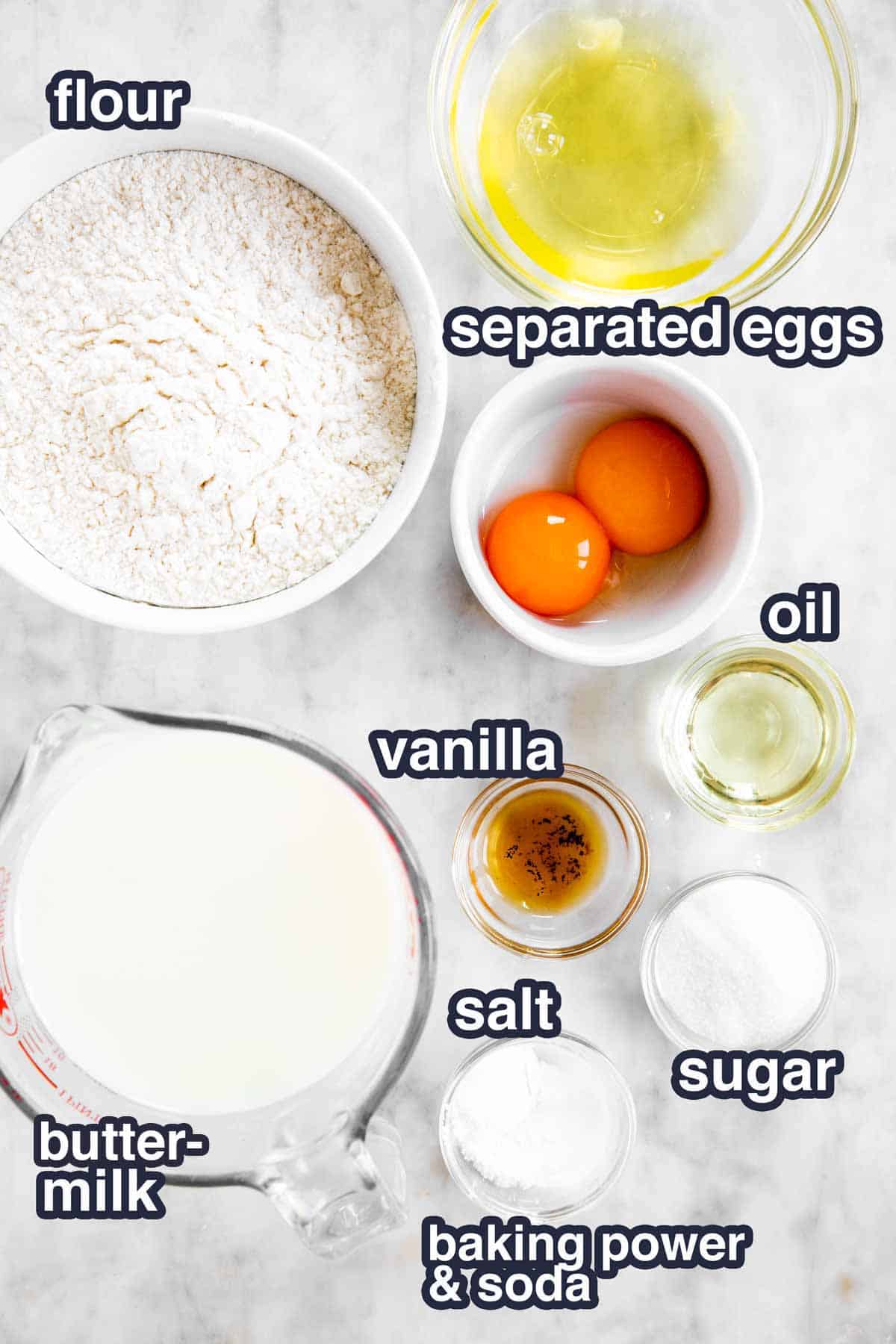
Ingredient notes
- Don’t want to use white flour? You can use half whole wheat, all whole wheat or all white flour for these pancakes – I have tried all versions multiple times, and they’re all delicious. When using 100% whole wheat flour, you may need to add an extra splash of buttermilk.
- Don’t have buttermilk? Just stir 1 tablespoon vinegar (white or apple cider is best) into regular milk and let it sit on the counter for 5-10 minutes before using it. An easy substitute! You can also use 1 ½ cups milk and ½ cup Greek yogurt – which is a favorite of mine. The yogurt works really well even when using buttermilk in combination with it and yields even thicker pancakes in my experience.
- No time to separate the eggs? Just skip this step and whisk the whole eggs until frothy before adding the remaining liquid ingredients.
- Oil: I strongly recommend using a neutral vegetable oil, you do not want an oil with a strong taste. For extra-delicious pancakes, use melted butter instead!
How to make Buttermilk Pancakes
Make the batter
1. Combine the dry ingredients in a large mixing bowl. Beat the egg whites in a medium measuring jug to stiff peaks. Whisk the wet ingredients together in a large measuring jug.
2. Fold the beaten egg whites through the wet ingredients.
3. Add the wet to the dry ingredients and fold just until combined. Do not over-stir! A lumpy batter is just fine.
fold egg whites through wet ingredients add wet to dry ingredients fold just until combined
Cook the pancakes
4. Heat a griddle or nonstick skillet over medium to medium-high heat.
I heat my griddle to 400-420°F, I find pancakes need a shorter cooking time at a higher heat; I have tried many different ways to cook these and they come out dense, gummy and honestly inedible when cooked over low heat!
5. Using ¼ cup of batter per pancake, cook them until the bubbles appearing on the surface pop and the edges look dry. This should only take a couple of minutes over medium-high heat – watch them closely or they’ll burn.
6. Flip and cook until the bottom is golden as well, about 1-2 more minutes.
bubbles appear ready to flip – bubbles have popped golden underside place on cooling rack or keep warm in oven
Serve the pancakes immediately, or keep them warm in the oven at 100°F, pancakes set on a rack to keep them from getting soggy.
Recipe tips
- DO NOT overmix! Really, this is THE most important thing when making pancakes. Lumps are ABSOLUTELY fine. I usually don’t stir more than 10-15 times when I make pancake batter. This is how you get the fluffiest pancakes!
- Make sure to allow the batter to rest for 20-30 minutes before cooking, otherwise the buttermilk can’t do its job and the pancakes won’t be as fluffy as you want them to be.
- I highly recommend cooking a single test pancake first, that way you can gauge if you need to increase or decrease the temperature, if the batter needs a little tweaking (a splash more buttermilk if the pancakes come out too thick, a couple of tablespoons of flour if the batter is too runny and the pancakes too flat; more salt and vanilla if they need more flavor).
- I very strongly recommend to cook these over medium-high heat. I know many cooks feel strongly about cooking pancakes over low heat for a longer period of time, but I have tested the cooking temperature for this recipe extensively, and nothing below 400°F yields good pancakes. The batter needs heat in order to rise and set into fluffy pancakes. Lower heat yields gummy pancakes that collapse into dense cakes shortly after taking them off the griddle.
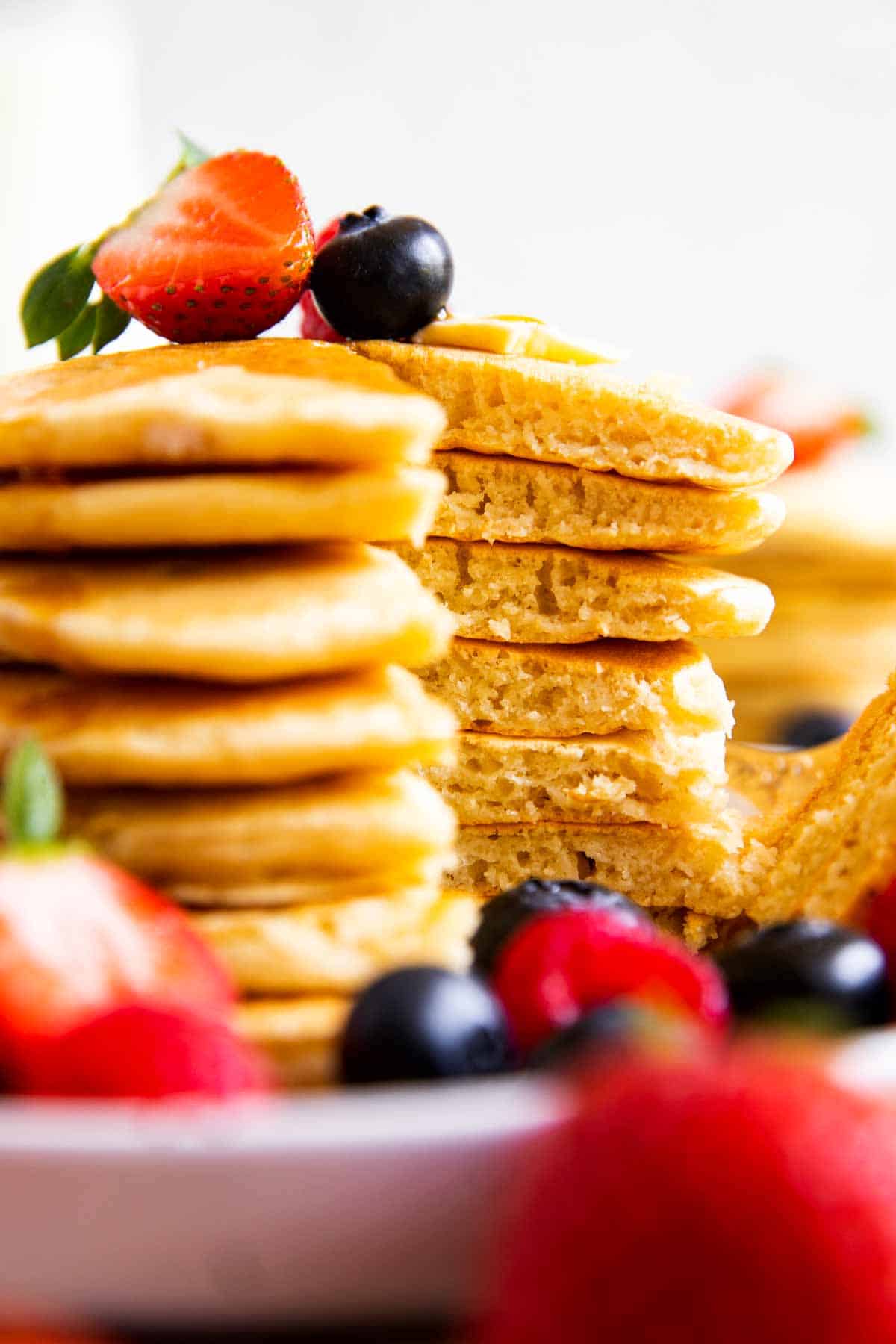
Freezer instructions
This recipes freezes very well – and I freeze all kinds of pancakes all the time. It’s so convenient to have them on hand for quick breakfasts!
Please remember the following when freezing this recipe:
- Wait for the pancakes to cool completely before freezing them (otherwise your freezer could heat up too much and affect the other frozen goods in there).
- Use a container or bag that is suitable for freezing.
- Label the bag or container with the contents, today’s date AND the use-by time (the pancakes can be frozen for up to 3 months).
- No need to defrost before reheating. You can microwave them, heat them in the oven OR pop them into the toaster until piping hot all the way through.
Serving ideas
Apart from maple syrup, berries and a pat of butter… There are lots of things we like to eat with these easy buttermilk pancakes for breakfast:
- Greek yogurt with a little maple syrup stirred in
- Fruit salad (either a winter version or a summer version, or a creamy berry salad)
- Crispy bacon
- Turkey sausage
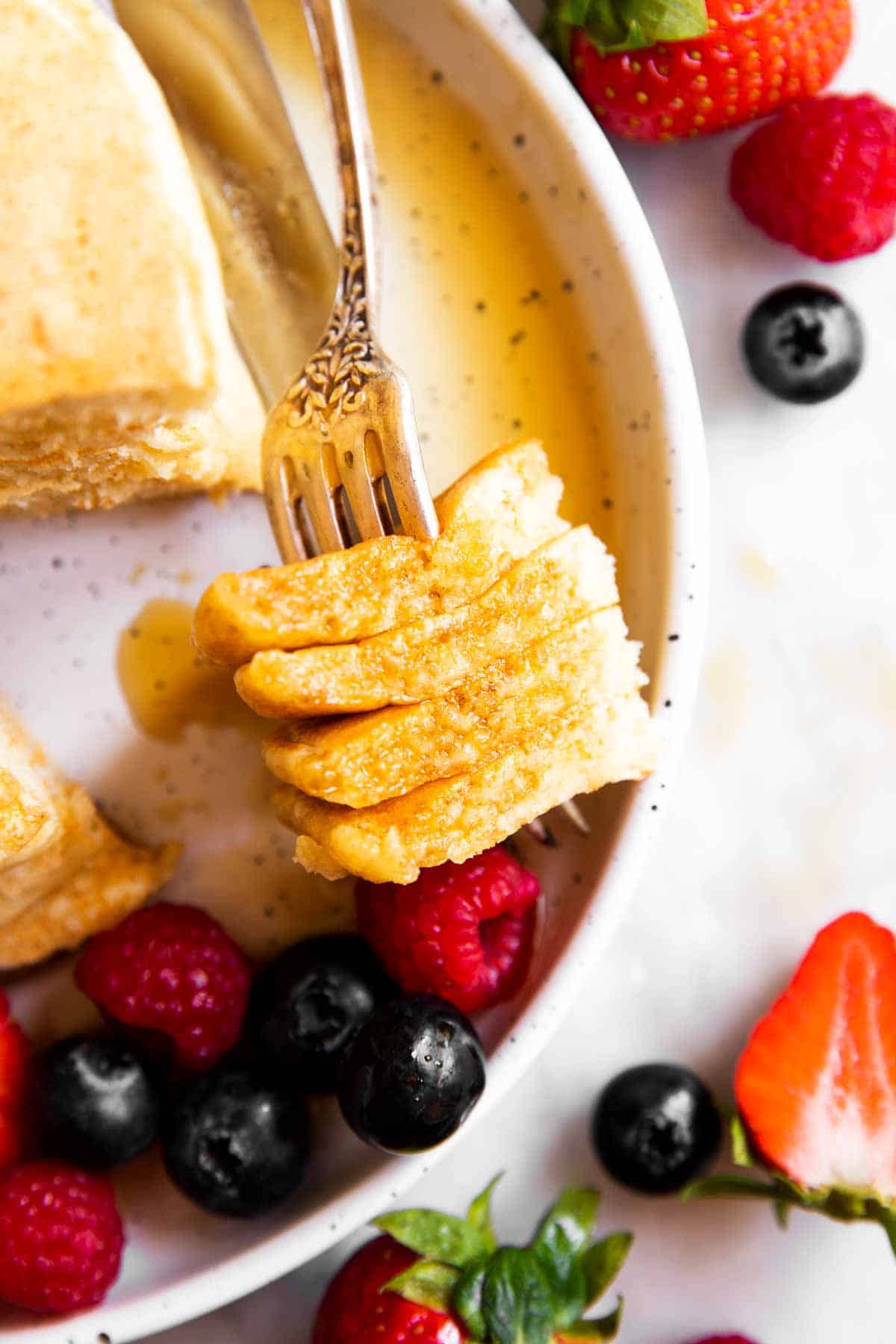
PS If you try this recipe, please leave a review in the comment section and add a star rating in the recipe card – I appreciate your feedback! Follow along on Pinterest, Facebook or Instagram.
Please note: An earlier version of this recipe included cottage cheese, but many complained about the batter being too thick. My family has switched to this recipe about a year ago, and I wanted to share our updated way. Feel free to substitute ½ cup cup of the buttermilk with cottage cheese or Greek Yogurt! The overall liquid content has been increased, so there shouldn’t be an issue with dense batter anymore.
Printable recipe
The Best Buttermilk Pancakes
Recipe details
Ingredients
Dry ingredients
- 2 ½ cups all-purpose flour spooned and levelled
- 3 tablespoons granulated sugar
- 2 teaspoons baking powder
- ½ teaspoon baking soda
- ¾ teaspoon salt
Wet ingredients
- 2 large eggs separated
- 2 cups buttermilk
- 2 tablespoons oil
- 2 teaspoons vanilla extract
Instructions
- Mix ingredients separately: Place all dry ingredients in a large bowl and mix well. Beat egg whites in a medium measuring jug until stiff peaks form. Blend wet ingredients in a large measuring jug until smooth.
- Combine egg whites and wet ingredients: Fold egg whites through wet ingredients using a rubber spatula.
- Combine wet and dry: Pour wet ingredients into dry ingredients and mix until JUST combined. Do NOT overmix! Lumps are fine. Rest batter for 20-30 minutes before cooking.
- Cook pancakes: Heat griddle or skillet over medium-high heat (I heat mine to 400-420°F). Using a heaping ¼ per pancake, cook until bubbles appearing on surface pop, flip and cook until done. Repeat until all batter has been used.
- Serve pancakes immediately, or keep warm on a rack at 100°F in the oven.
Notes
Ingredient notes
- Don’t want to use white flour? You can use half whole wheat, all whole wheat or all white flour for these pancakes – I have tried all versions multiple times, and they’re all delicious. When using 100% whole wheat flour, you may need to add an extra splash of buttermilk.
- Don’t have buttermilk? Just stir 1 tablespoon vinegar (white or apple cider is best) into regular milk and let it sit on the counter for 5-10 minutes before using it. An easy substitute! You can also use 1 ½ cups milk and ½ cup Greek yogurt – which is a favorite of mine. The yogurt works really well even when using buttermilk in combination with it and yields even thicker pancakes in my experience.
- No time to separate the eggs? Just skip this step and whisk the whole eggs until frothy before adding the remaining liquid ingredients.
- Oil: I strongly recommend using a neutral vegetable oil, you do not want an oil with a strong taste. For extra-delicious pancakes, use melted butter instead!
Recipe tips
- DO NOT overmix! Really, this is THE most important thing when making pancakes. Lumps are ABSOLUTELY fine. I usually don’t stir more than 10-15 times when I make pancake batter. This is how you get the fluffiest pancakes!
- Make sure to allow the batter to rest for 20-30 minutes before cooking, otherwise the buttermilk can’t do its job and the pancakes won’t be as fluffy as you want them to be.
- I highly recommend cooking a single test pancake first, that way you can gauge if you need to increase or decrease the temperature, if the batter needs a little tweaking (a splash more buttermilk if the pancakes come out too thick, a couple of tablespoons of flour if the batter is too runny and the pancakes too flat; more salt and vanilla if they need more flavor).
- I very strongly recommend to cook these over medium-high heat. I know many cooks feel strongly about cooking pancakes over low heat for a longer period of time, but I have tested the cooking temperature for this recipe extensively, and nothing below 400°F yields good pancakes. The batter needs heat in order to rise and set into fluffy pancakes. Lower heat yields gummy pancakes that collapse into dense cakes shortly after taking them off the griddle.
Freezer tips
- Freeze cooled pancakes in labelled freezer bags for up to 3 months.
- No need to defrost when reheating – reheat in bursts in the microwave, in a toaster oven or in the toaster.
Nutrition
More recipe information
Recipe first published on 09/05/2018. Updated with new photos, better text and tweaks to improve batter consistency in recipe on 05/06/2021.
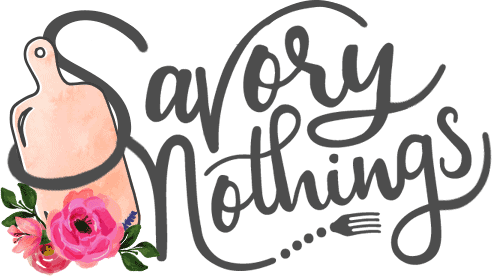

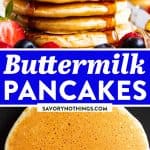
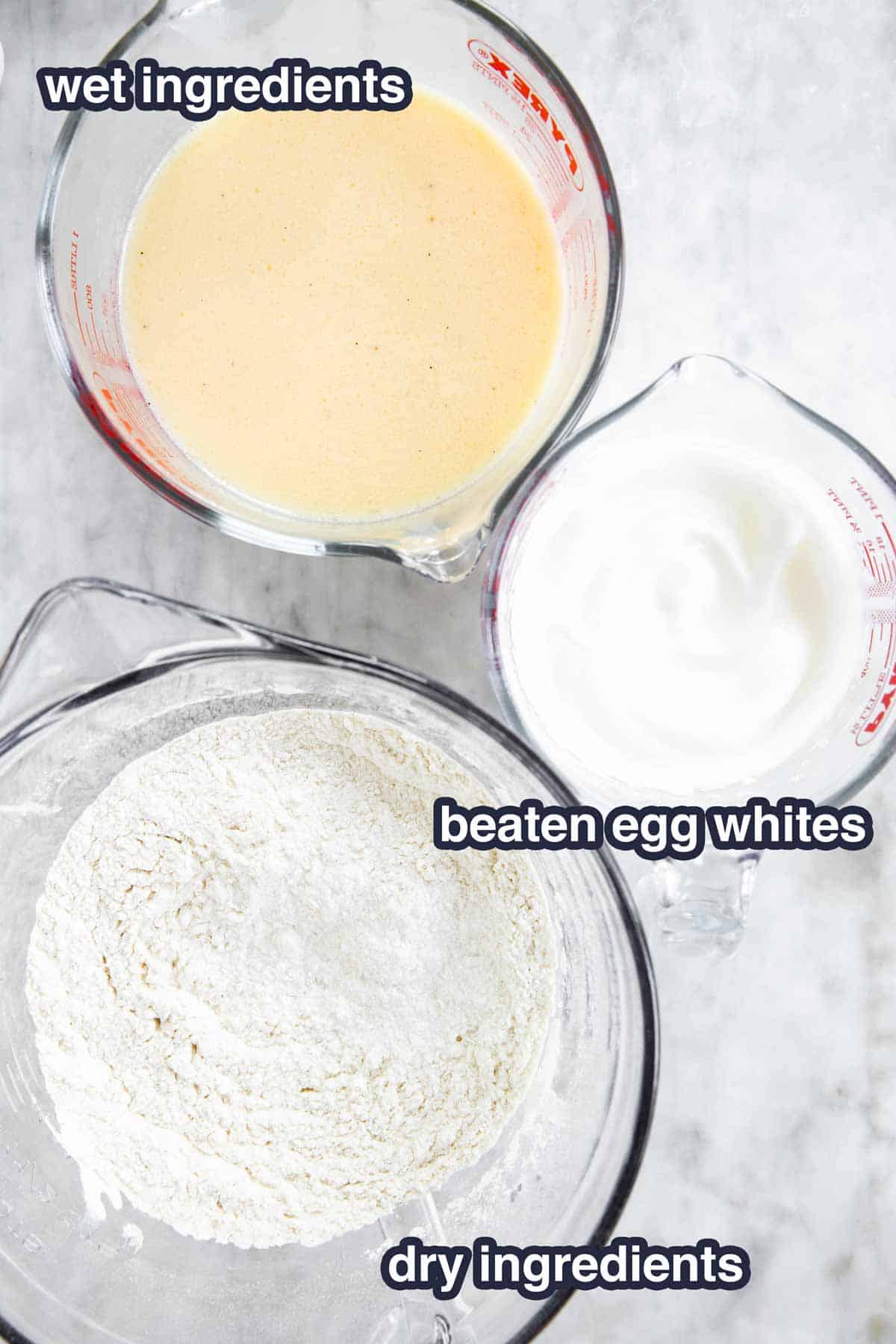
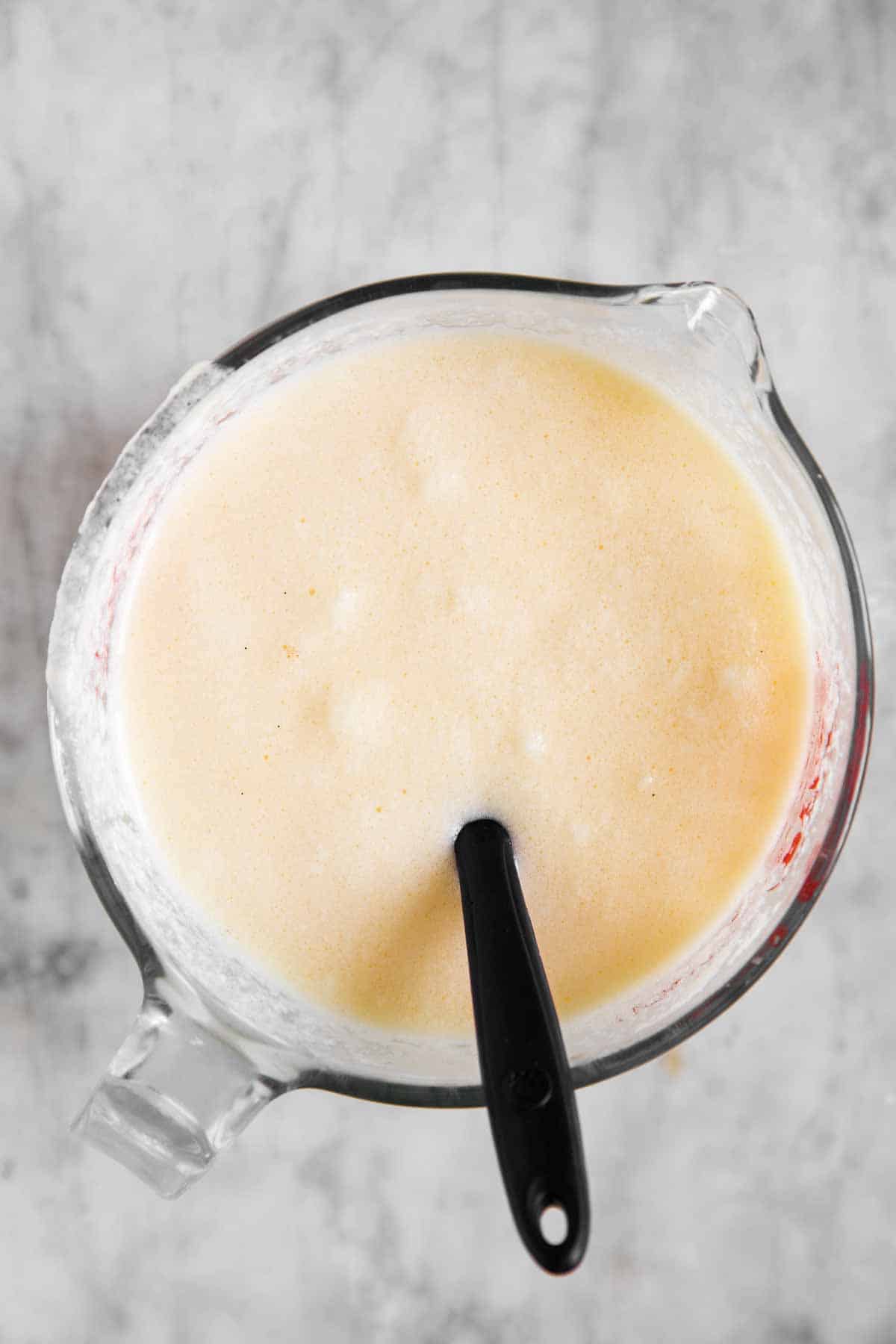
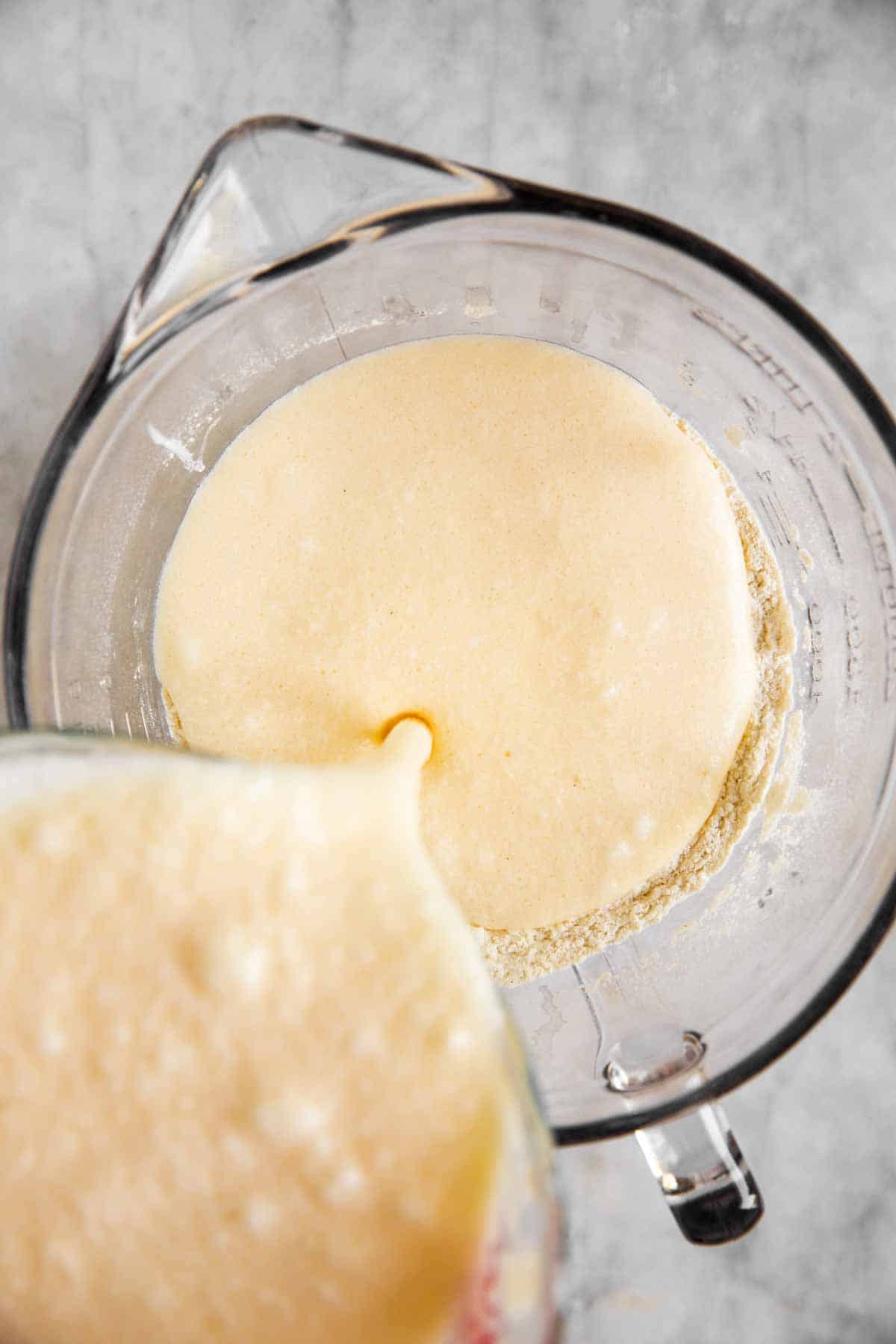
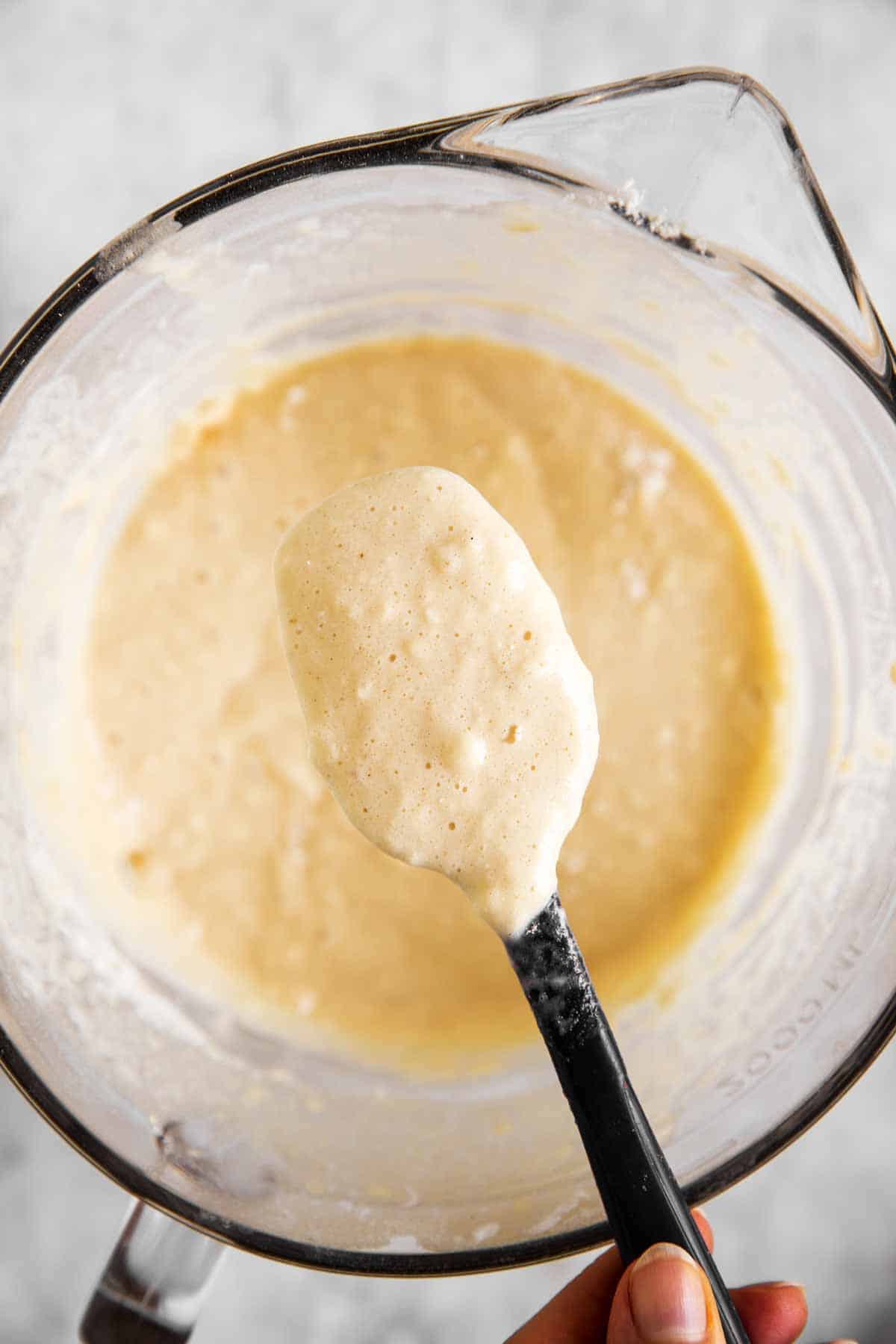
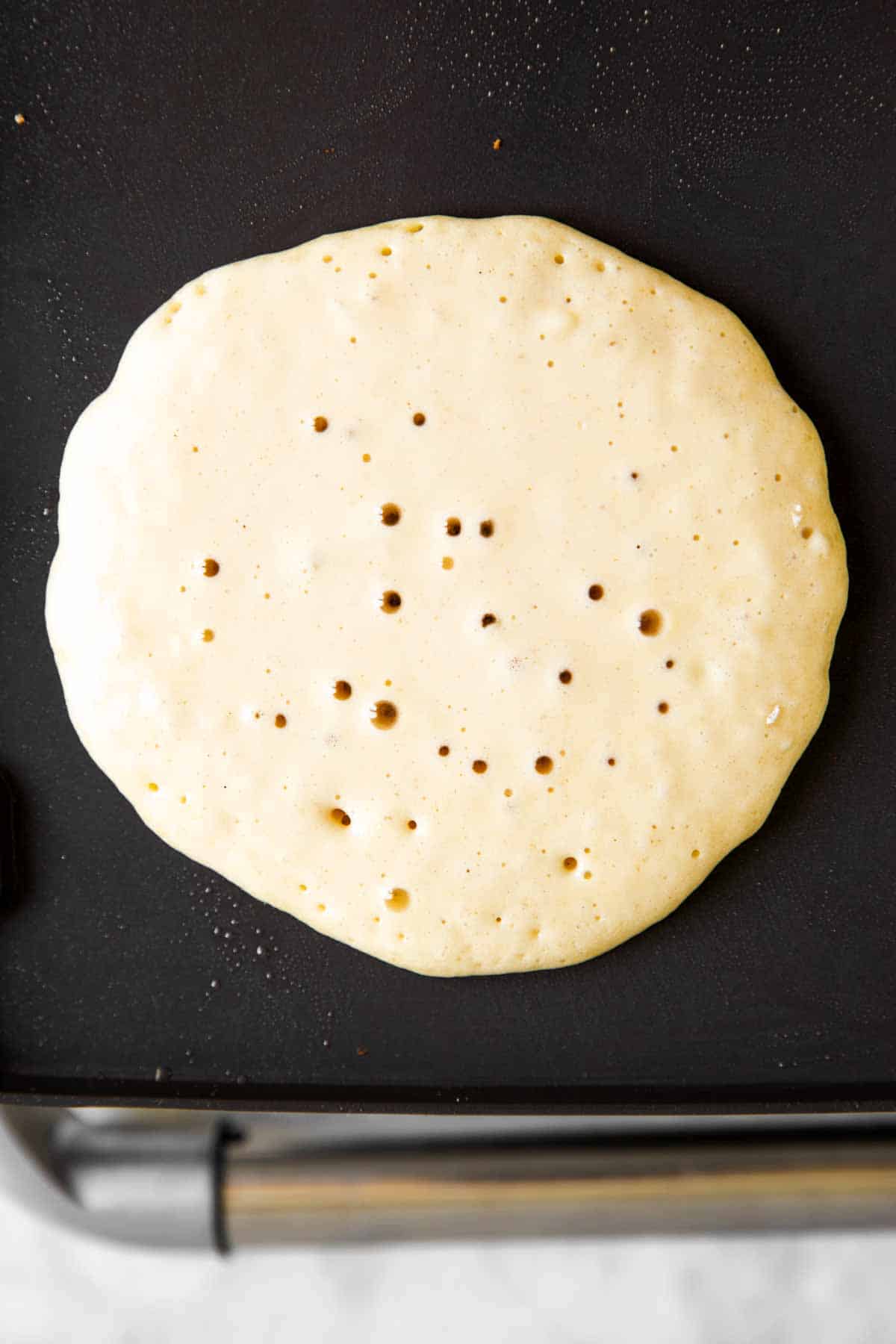
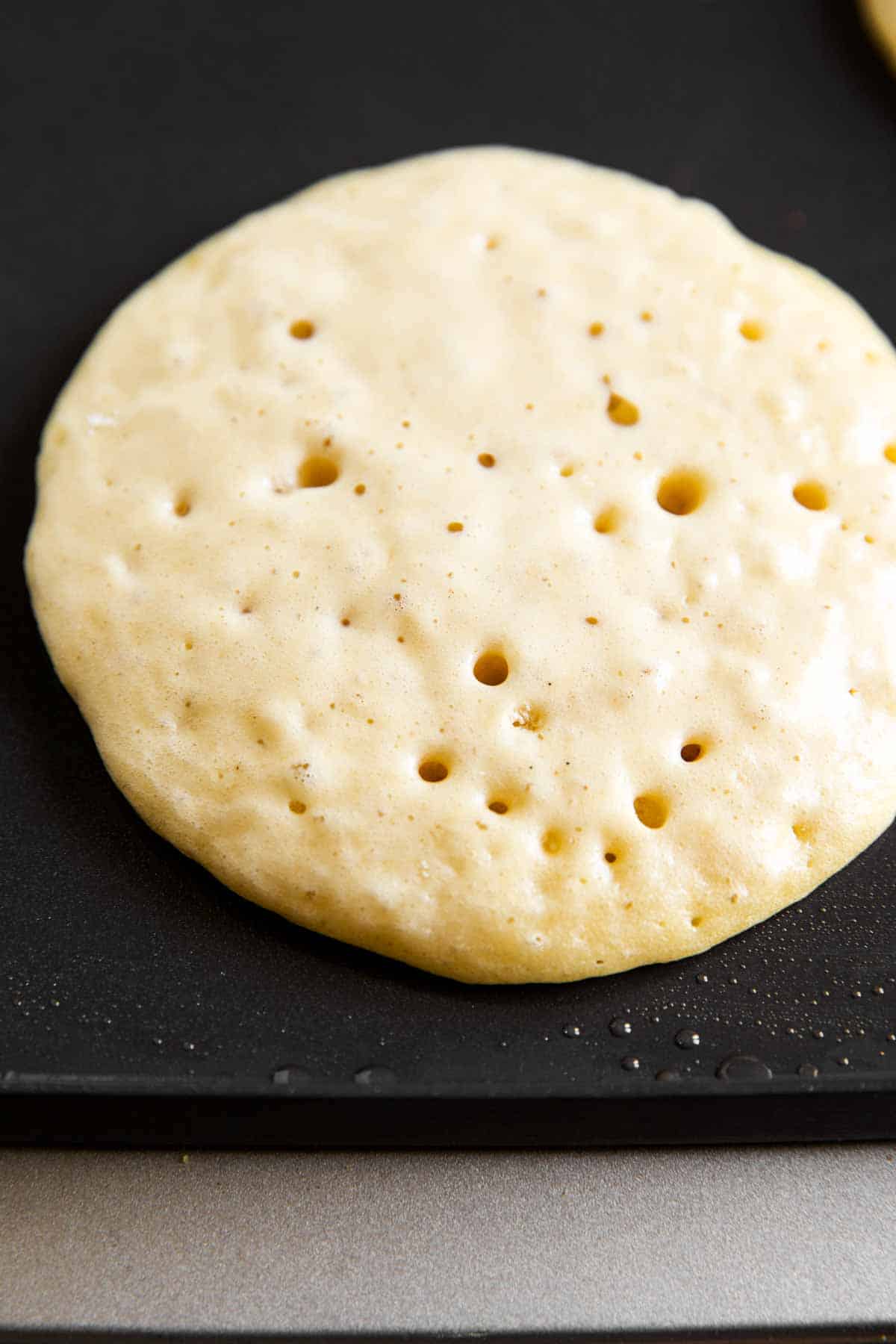
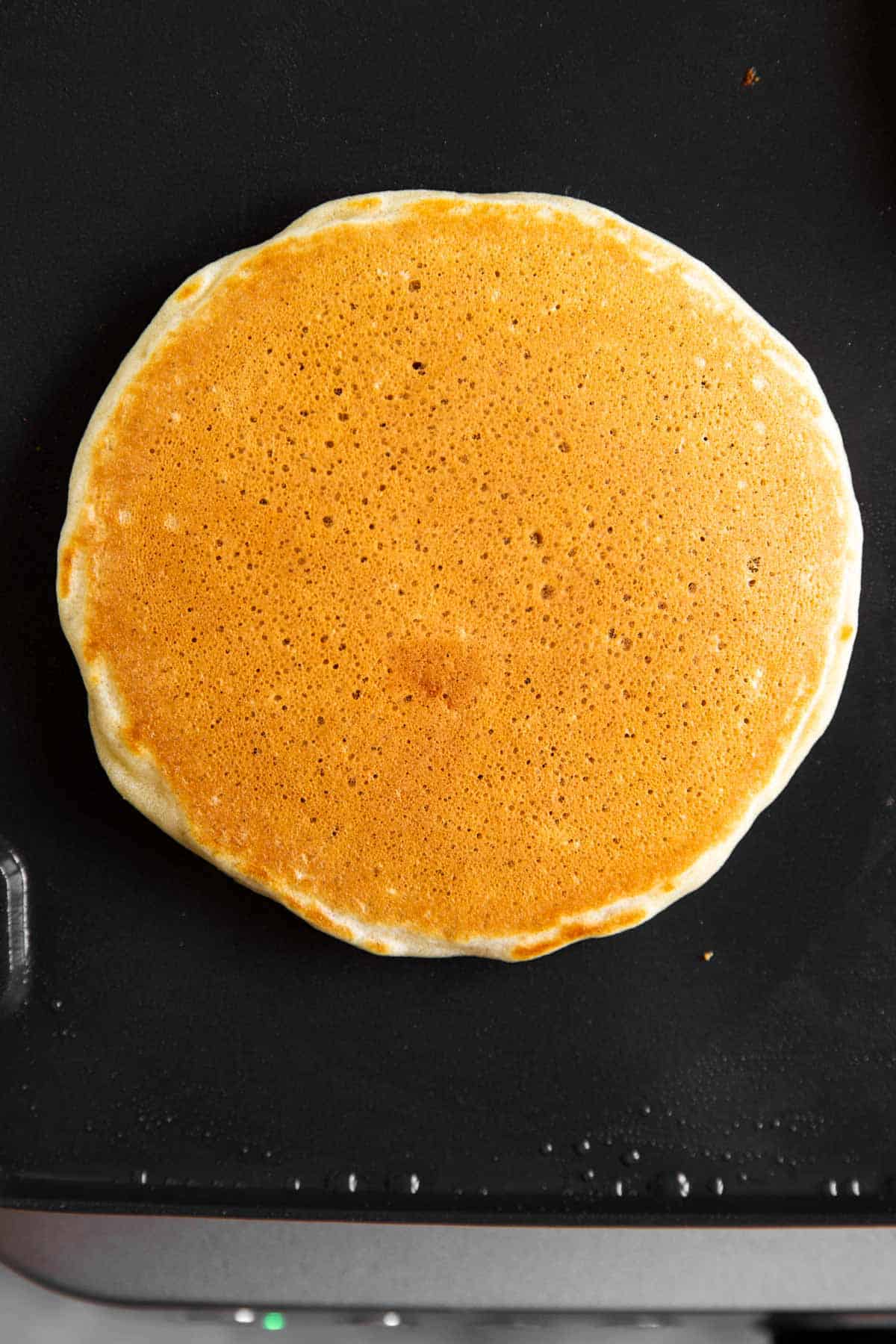
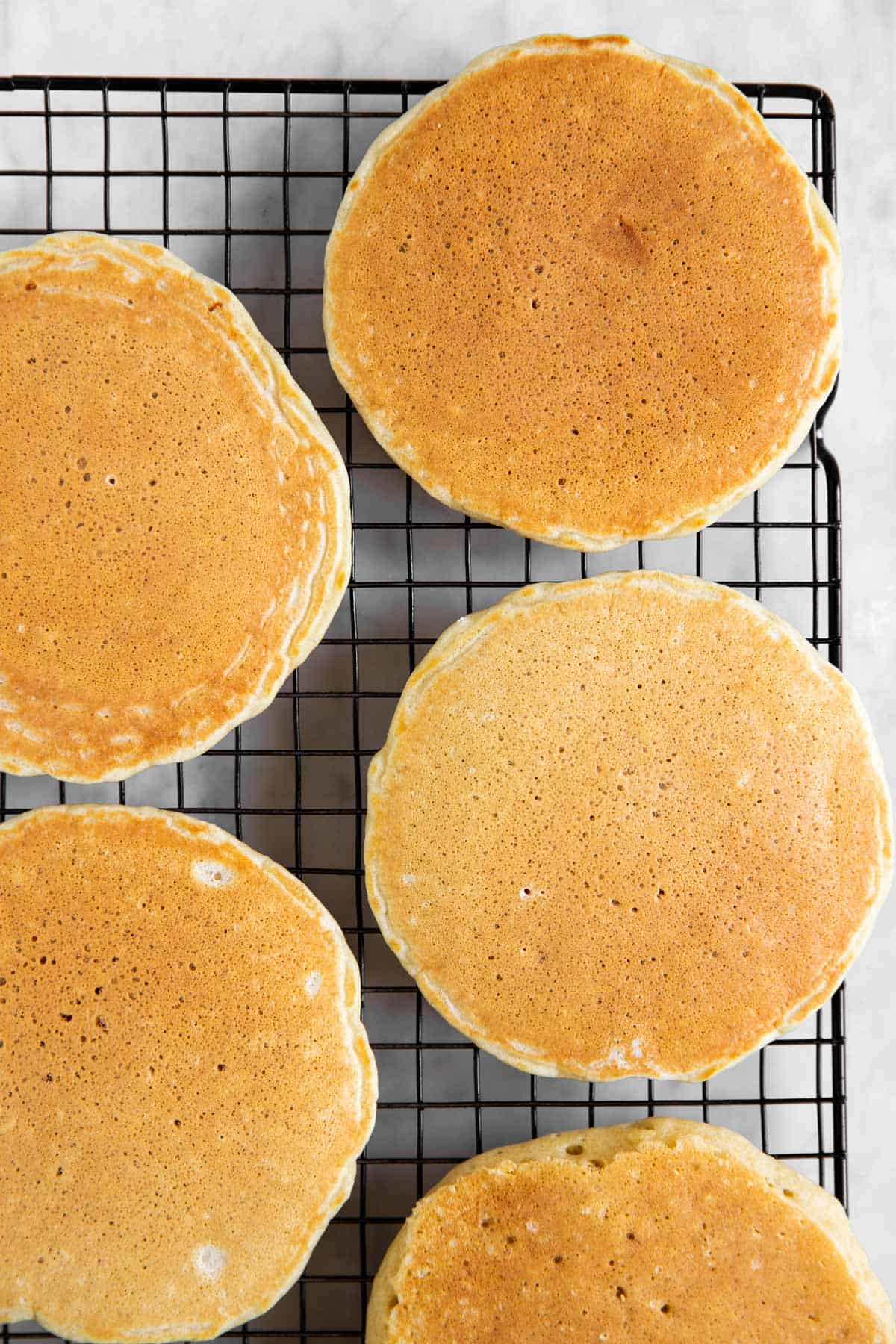
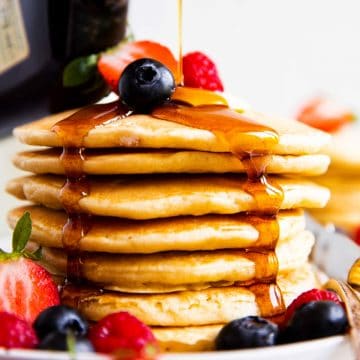
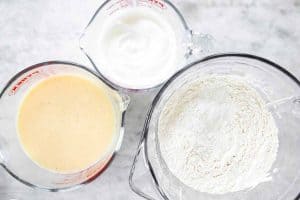
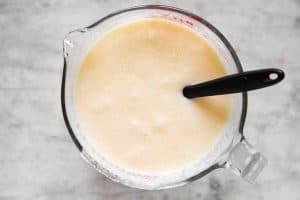
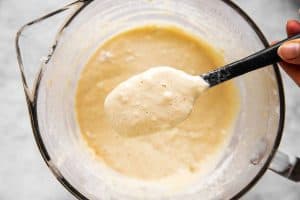
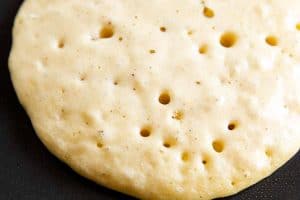
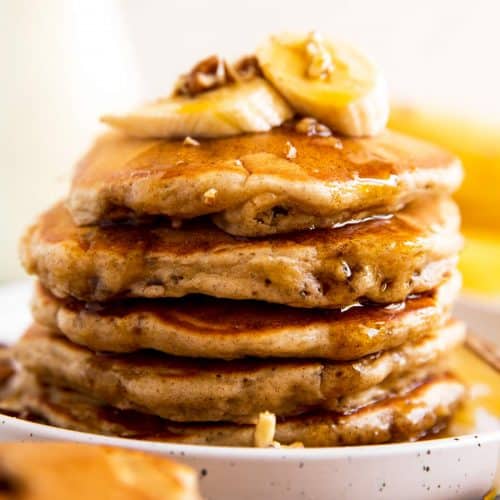
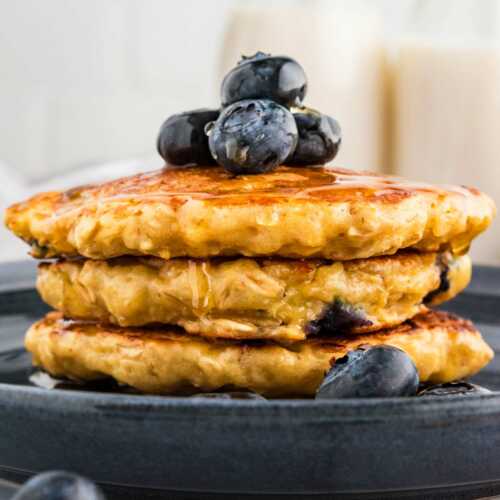
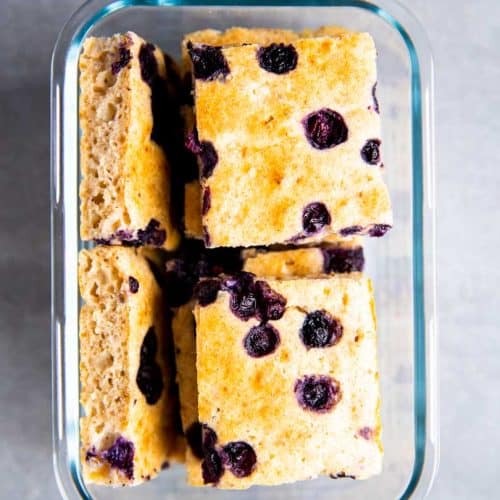
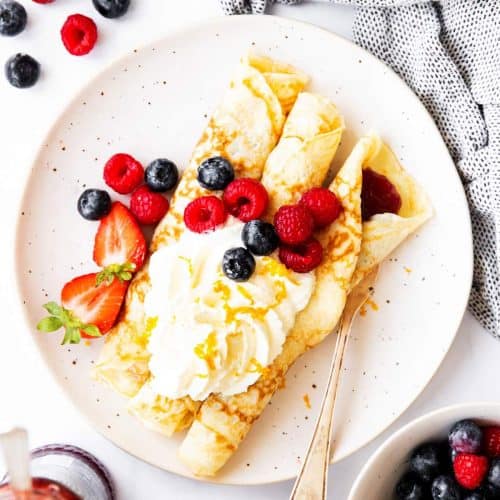
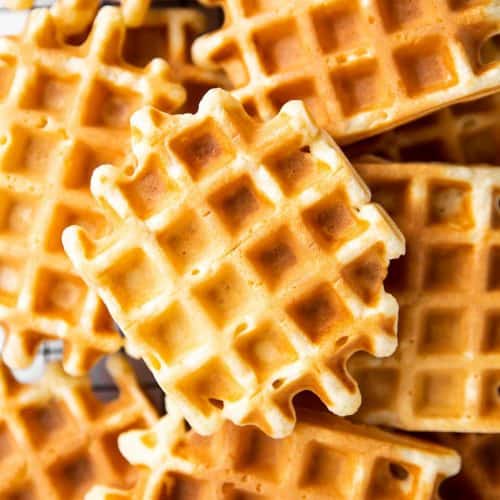
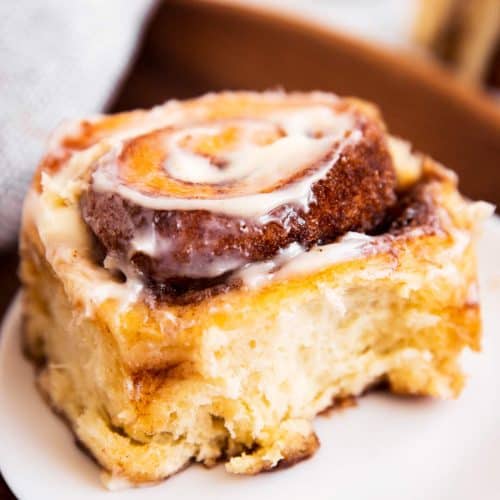
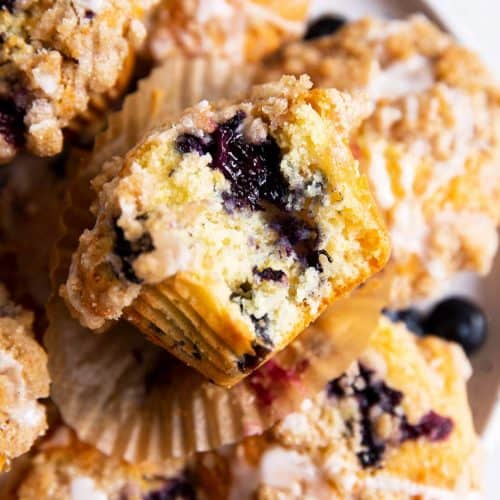
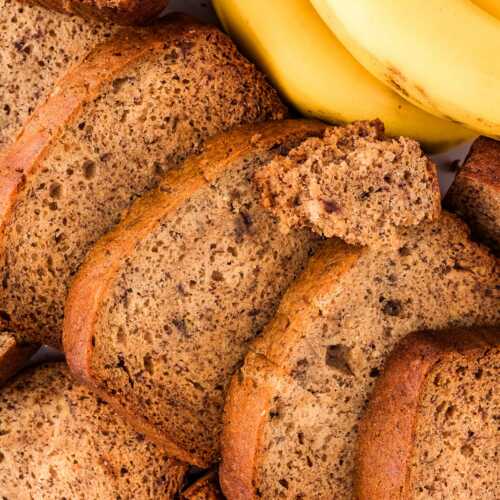
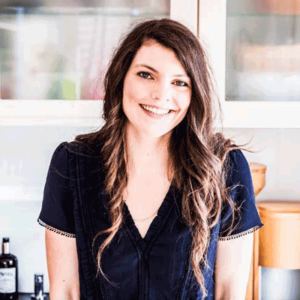
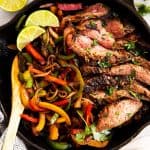
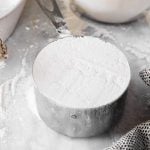
Kayla says
I do agree with the previous commenter that the batter is so so thick and sticky that that is the downfall of the recipe and I did use cottage cheese both times I’ve made it. I know high altitude was mentioned previously and I live in North Dakota and altitude is not an issue.
Nora Rusev says
Kayla, noted. It’s strange because we make this all the time and never have this issue, but I’m thinking it might be ingredient differences. Going to re-test this recipe next week or weekend, and see if I can figure this out.
Tiffanie says
I nearly wrote a bad review and then realized I should have been paying attention to high altitude baking. I’ve never really paid attention to the fact that I always have to add more liquid to pancakes than the recipe says. I tried to give your recipe trust, but there wasn’t enough liquid which I now realize had to do with me being 6000 feet above sea level. When I scooped the batter on the pan it looked more like a drop biscuit and I couldn’t even smooth out the batter because it was so sticky. I was able to add water and rescue the rest of the batter and they still turned out to be super fluffy with a great flavor. For reference, I used a mashed banana rather than cottage cheese, but that alone couldn’t have affected it so drastically. Next time I’ll use less baking powder and an extra egg and see if that does the trick.